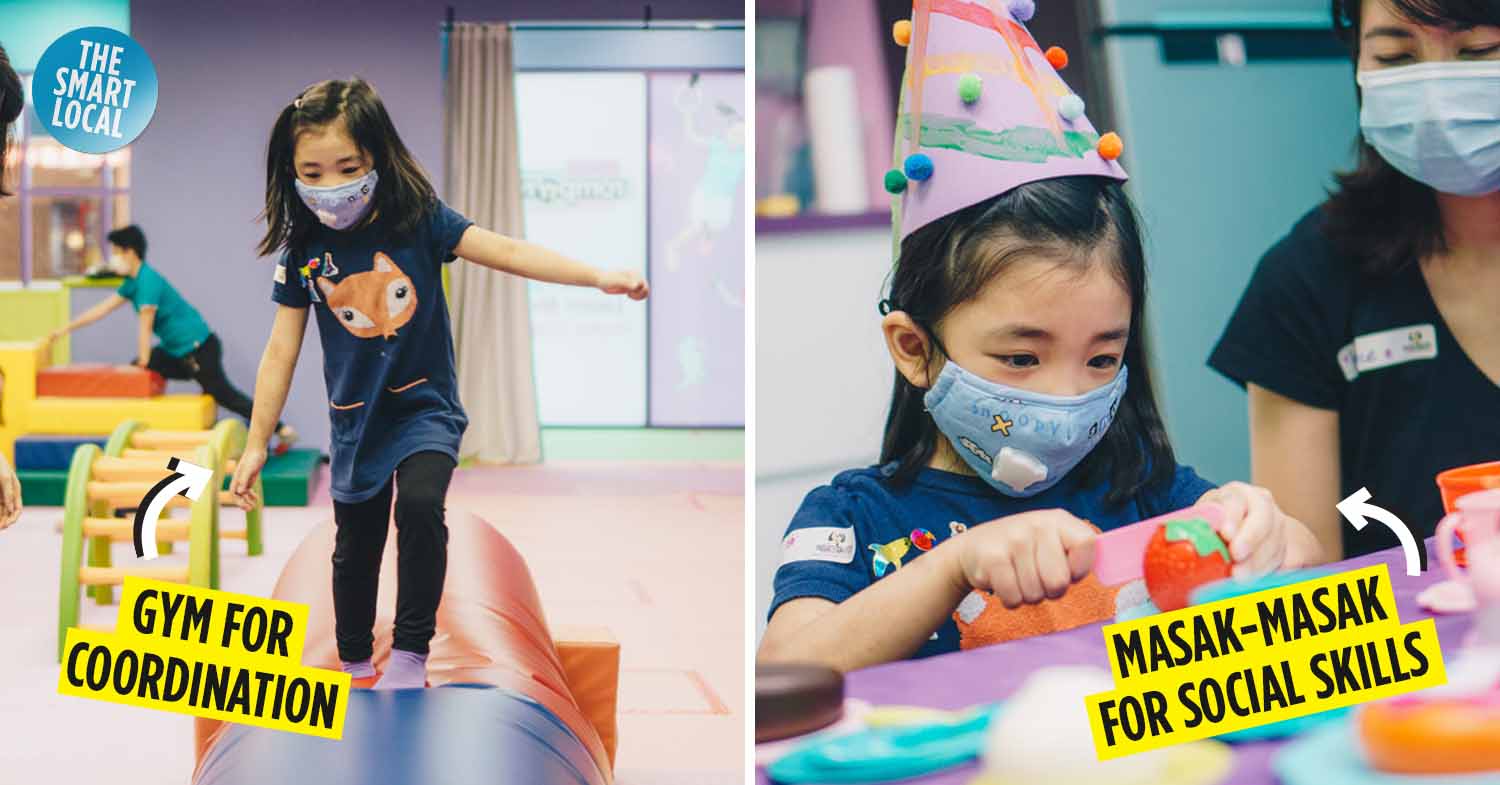Best play-based learning activities for children
“Play” is a natural part of childhood – it doesn’t just allow kids to have fun, but it’s also vital for their development. If you’re constantly looking for fresh ideas on how to enhance your child’s development, incorporating childrens’ natural instinct to play can go a long way.
Since the growth and well-being of kiddos are of top priority for parents, giving children the right space and environment to learn is important. We spoke to child educators from Romp n’ Roll to understand the 5 best activities for play-based learning.
1. Obstacle courses – build strength & coordination
Building strength and coordination isn’t just a thing for future athletes – they’re vital for a child’s health and helps them maintain their fitness in the long run. While it is true that children build strength naturally as they grow, placing them in an environment that facilitates that will make a difference in tapping into their potential.
Obstacle courses are a fun way to hone these skills, and it also introduces children to structure and teaches them how to follow directions. However, to DIY them in a HDB is near impossible.
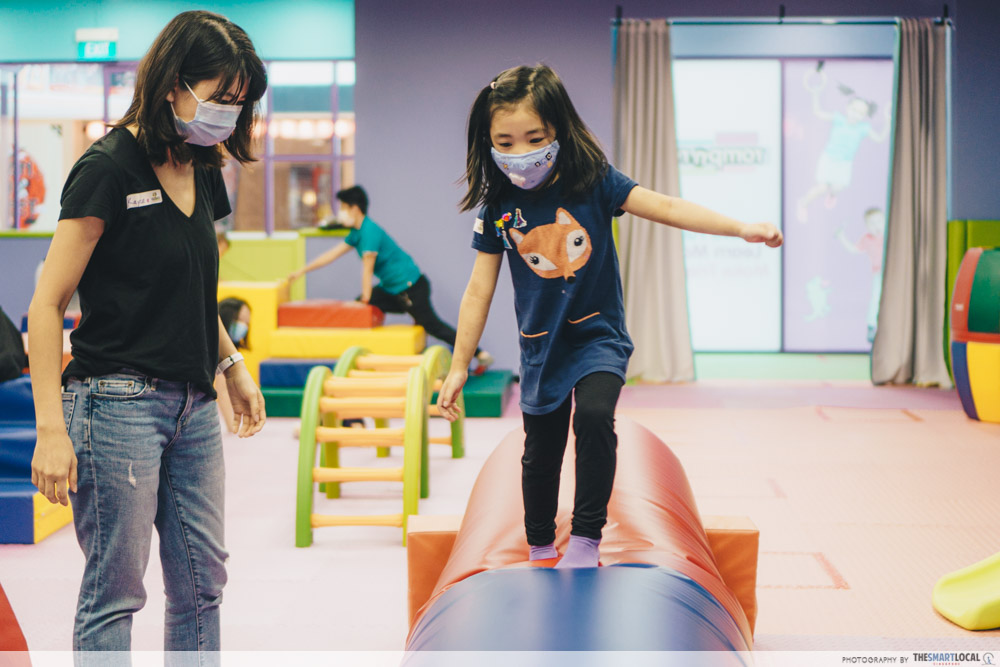
Romp n’ Roll’s gym has a variety of equipment to help kids develop different muscle groups, from core muscles to upper body strength.
Instead of making a DIY cardboard fort in your HDB, consider sending your energetic 3-year-old to gym classes. Child educators encourage parents to look out for gyms with obstacle courses that train your kid’s physical strength and coordination, so they can confidently Ninja Warrior their way through a safe environment.
Pro tip: Look for classes that combine music and kids’ gym facilities. It not only makes your child’s experience fun, but also adds an element of coordination to their workout – sort of like how you’d put on music to motivate you for a run at an adult gym.
Age group: 3-5 years old
2. Art and crafts – develop fine motor skills
Many adults may think that arts and crafts equates to boosting creativity in kids. But it’s a lesser-known fact that it actually does double duty in helping them develop fine motor skills in their hands.

Kids can let their imagination loose while learning how to handle delicate craft material like glue, paint, and pom pom balls at Romp n’ Roll’s art classes.
When kids do little actions like squeezing glue or painting, it actually works muscles in the fingers, wrists and hands that’ll eventually help them perform more complex tasks like writing and using a pair of scissors. As soon as you know it, small everyday actions like buttoning a shirt and using a fork will become second nature to your kiddo.
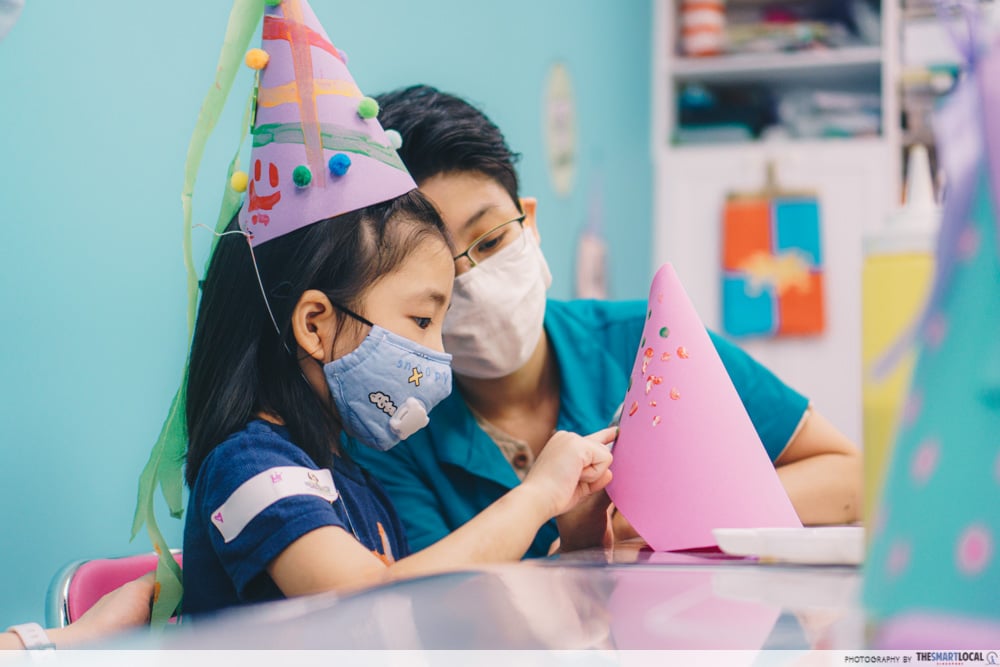
Pro tip: Most parents may be tempted to jump in to help their child with complex tasks like gluing items to their arts and crafts project, or helping them paint neatly, but avoid doing this so your kiddo can confidently and independently develop these important motor skills.
Age group: 2.5 -5 years old
3. Sensory play – stimulate brain development
The development of your child’s brain is probably going to be one of the main concerns for Singaporean parents when it’s time for books and exams. But unbeknownst to many, one way to develop a healthy brain in kids is through sensory play.
It’s as simple as exposing your child to new objects and allowing them to feel its textures and explore them – imagine it as a grown adult exploring an alien world for the first time.
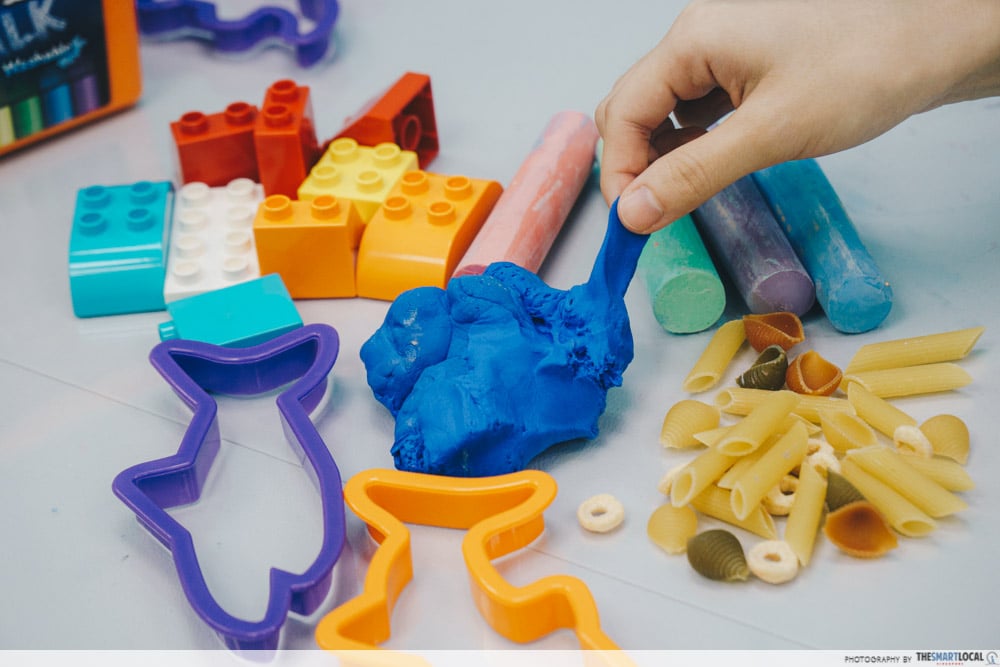
Pasta, play dough, Lego and sand are among the few items that kids at Romp n’ Roll will get to play with.
By doing so, this will actually allow your kiddo to form important connections in their brain pathways – the same types of connections that will eventually help them retain information that they learn in the future.
Since kids are naturally curious, consider sending them for sensory play classes where they can explore in a safe environment with child-safe materials. You can do this anytime before they turn 5, so it’s never too late to start!
Pro tip: Don’t be afraid to let your child get their hands “dirty” with things like sand and play dough – it’s all part of the process of letting them have first-hand experience with an array of materials textures.
Age group: 16 months – 5 years old
4. Music – learn communication skills
Anyone with a child would be familiar with having iconic tunes like “Baby Shark” and “The Wheels On The Bus” being played on loop. But these songs serve a much bigger purpose than simply providing entertainment – it turns out music is an important part of helping children develop their communication skills and even literacy.
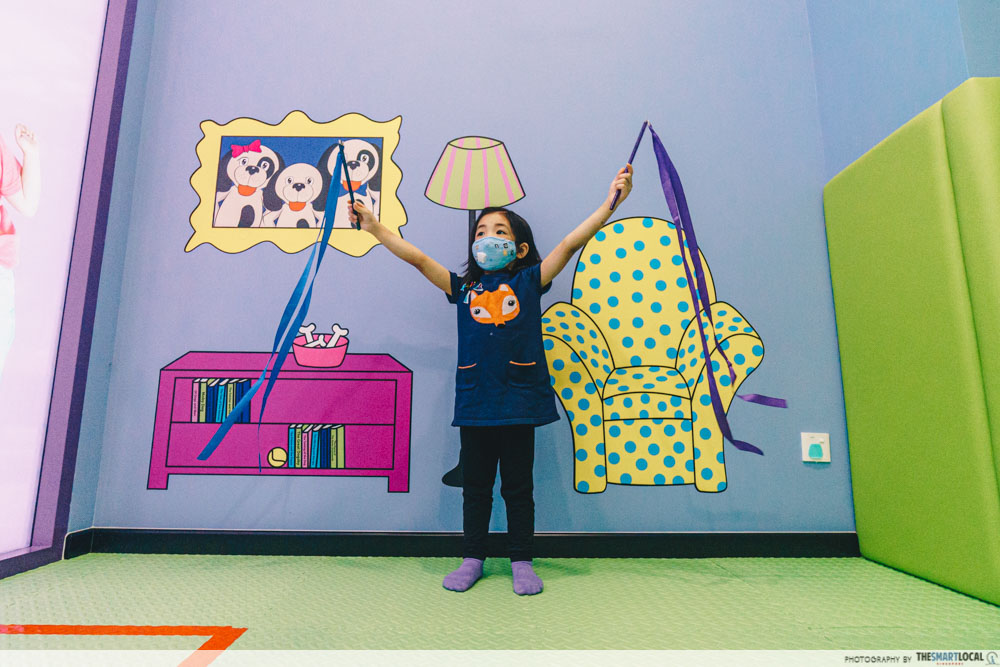
Music is incorporated into Romp n’ Roll’s classes, which includes one with hands-on experiences with instruments like shakers and bells.
You’re on the right track then, if you find a child development centre that incorporates music into their classes. This is because it’s easier for children to comprehend words like “jump”, “left”, “right”, “up” and “down” when it’s paired with catchy tunes and dance moves.
Pro tip: Besides adding a dash of fun to classes, music can also be used to calm children down after they’ve expended their energy – like lullabies.
Age group: 10 months – 3 years old
5. Role playing – stretch the imagination
Think back to the time when you were a kid and make-believe was probably a huge part of your playtime. That’s why role-playing is an activity that’s easy to incorporate into classes, especially when it’s used to help kids learn important life skills.
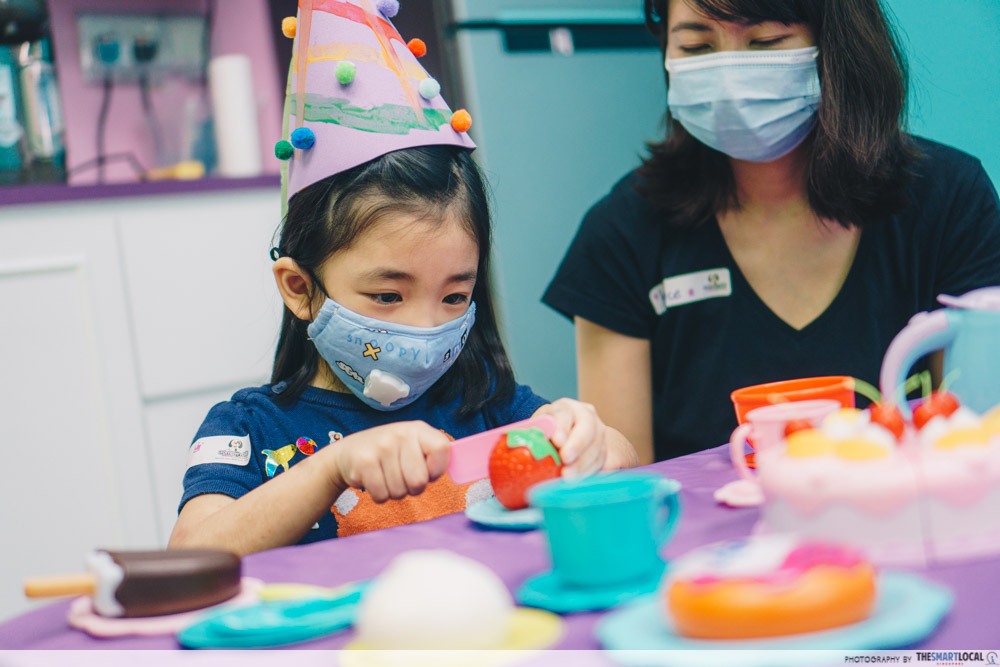
Here, innocent masak-masak tea parties can serve as a platform for children to learn social mannerisms like being polite and sharing with others. Under the guise of a fun activity, these otherwise mundane lessons then become more appealing to the young ones.
Child educators have also observed that role-playing activities allow children to express themselves and adapt to their surroundings while in “character”. This nurtures their creativity, openness to share and ability to regulate their emotions.
Pro tip: Every day can be dress-up day. Check with your child-friendly gym if costumes are allowed, or better still, if they have classes that provide them.
Age group: 16 months – 3 years
Play-based learning for children at Romp n’ Roll
Young ones are full of energy, and they need an outlet to unleash it. Let them thrive in an environment that is designed to develop them in all areas, from brain and body, to emotions and confidence.
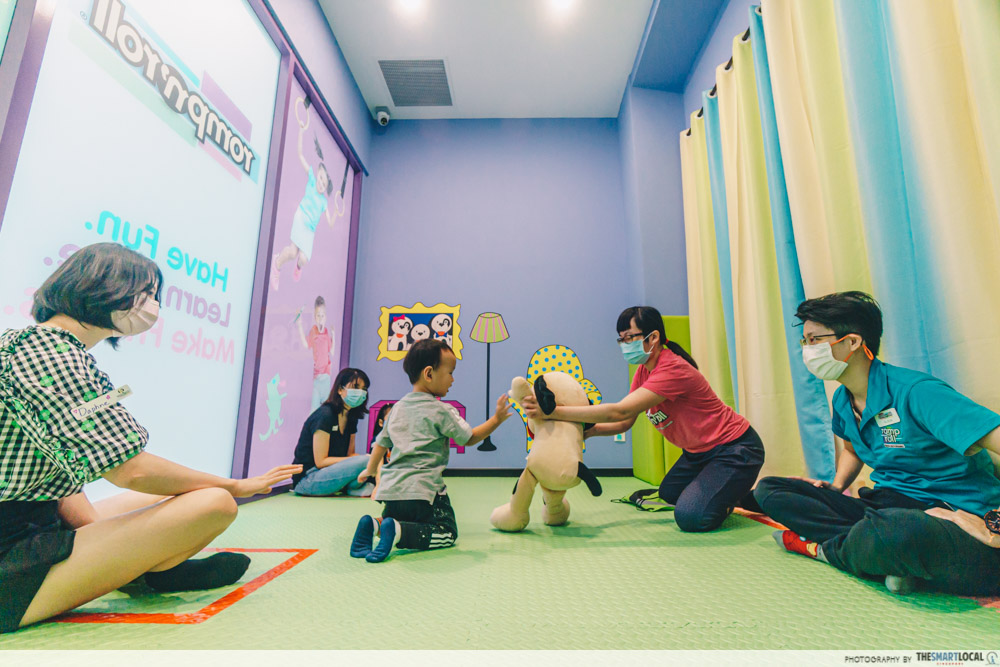
Play-based learning is suitable for kids aged 10 months to 5 years old
At Romp n’ Roll, each class is carefully designed to maximise learning and every component is intended to help a child grow through play. For instance, every class starts with singing and storytelling, which helps kids to start recognising words and phonics.
Their classes are designed for babies, toddlers and preschoolers. All lessons are parent-friendly, as young ones grow the most with the presence of their guardians, who’d be proud of their little milestones while showing genuine excitement and approval. Moreover, most parents would love to witness their children’s achievements first-hand.
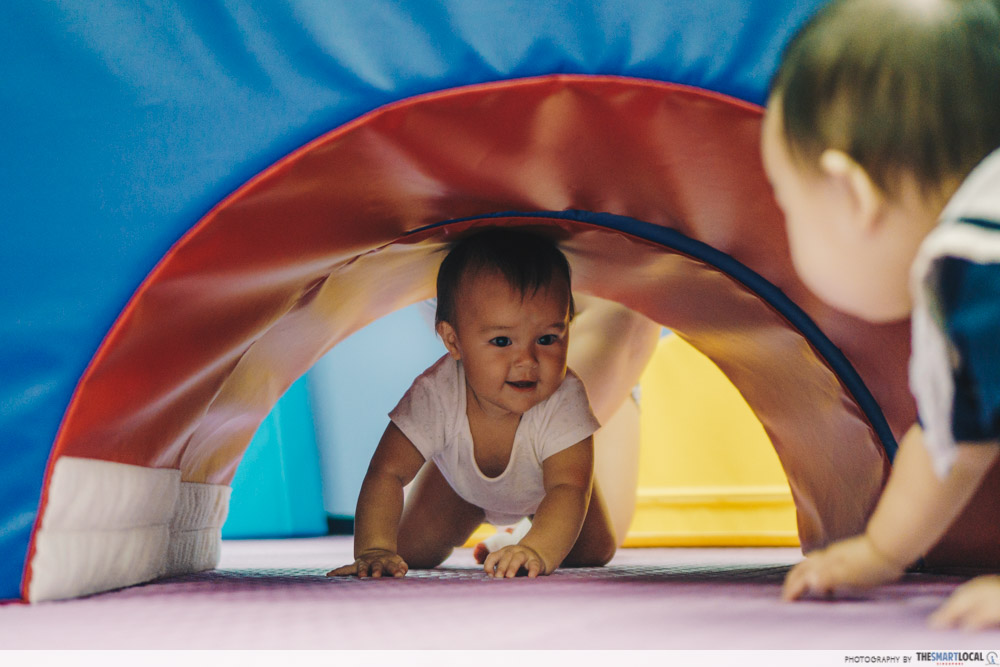
Play-based learning at Romp n’ Roll
Memberships are flexible on a month-to-month basis, so there’s no need to worry about long-term commitment. You can also attend classes any day each week – whichever suits your schedule best. Keep updated with class schedules on Romp n’ Roll’s Facebook page.
They are currently offering one-time trial classes at only $18, where you’ll be able to accompany your kiddo for a visit at Romp n’ Roll and try out their gym and classes. If you sign up for a membership or any other class or activity during your trial visit, your trial class will be free.
All parents want their kids to grow healthily and happily, and allow them to reach their fullest potential. You can start to bring out the best in them from as early as 3-months-old by providing them optimal resources. Best yet, let them have a ton of fun through it all.
Book a trial class for play-based learning at Romp n’ Roll
Address: No. 3 Temasek Boulevard, Suntec City #03-328-329, Singapore 038983
Telephone: 6815 5990
Romp n’ Roll website
This post was brought to you by Romp n’ Roll.
Photography by Huy Pham.
